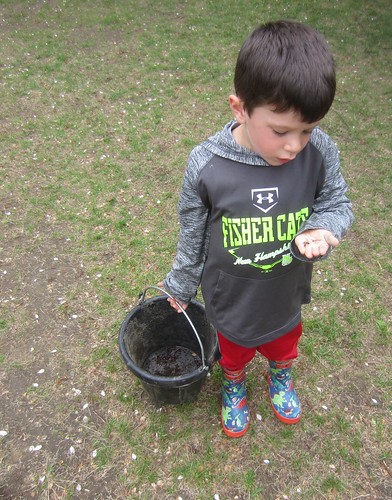 Caterpillar catchers were on the hunt, scouring every tree trunk, log, table, fence post, and friend for the fourteen legged creepy crawlers. Trillions of tent moth caterpillars, as estimated by the sharp-eyed collectors, were discovered and well cared for.
Caterpillar catchers were on the hunt, scouring every tree trunk, log, table, fence post, and friend for the fourteen legged creepy crawlers. Trillions of tent moth caterpillars, as estimated by the sharp-eyed collectors, were discovered and well cared for.



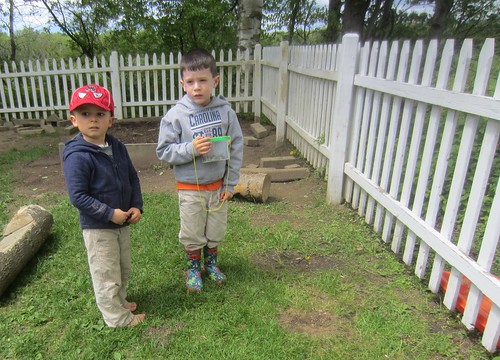
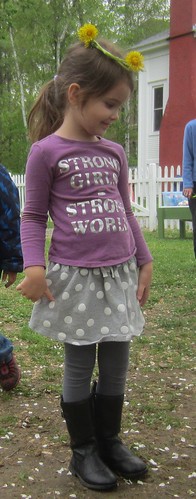

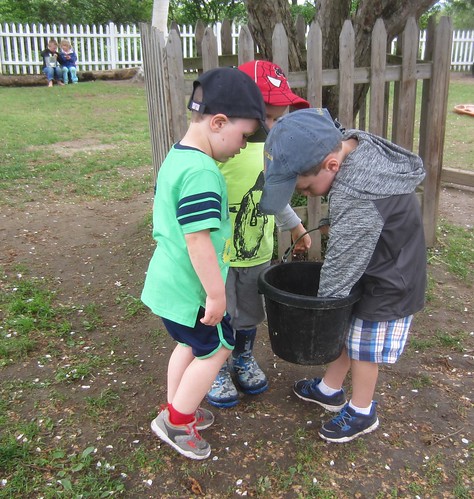
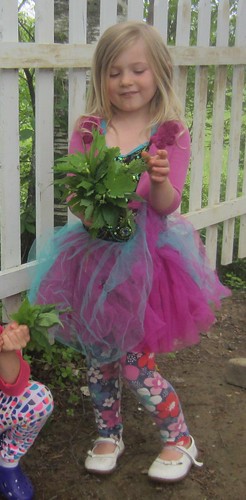
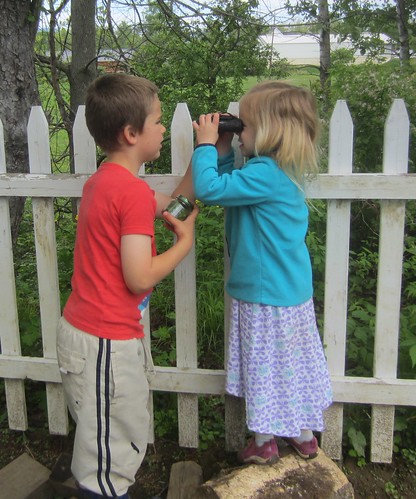
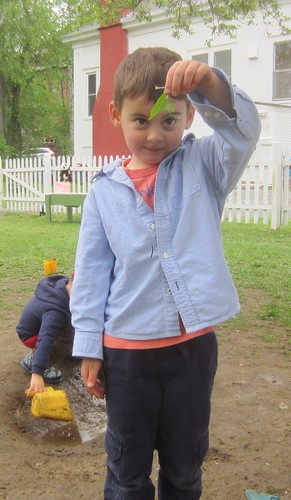
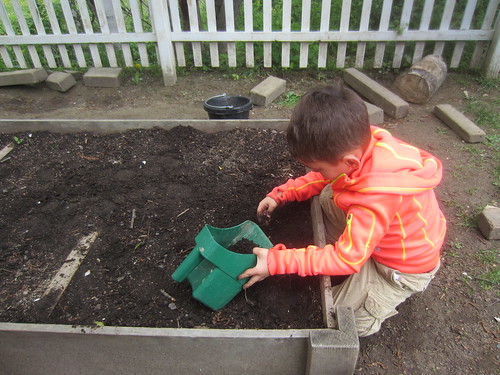
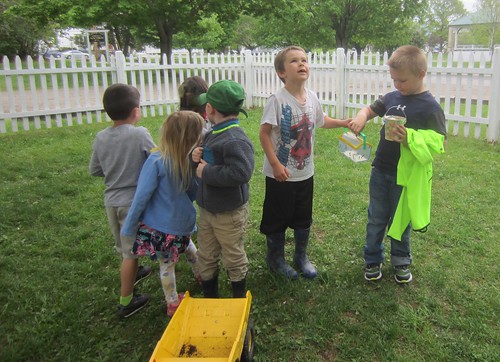
 Artists were at work on various projects, including self-portraits, finishing up thank-yous for Wozz, and other writing and drawing work.
Artists were at work on various projects, including self-portraits, finishing up thank-yous for Wozz, and other writing and drawing work.
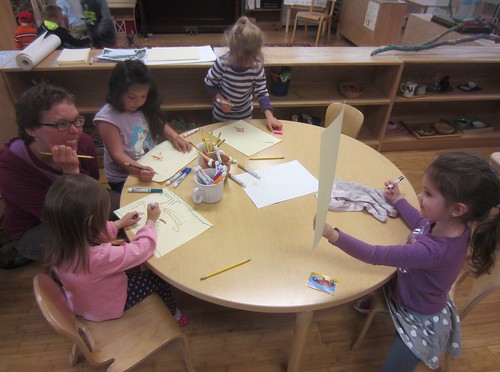
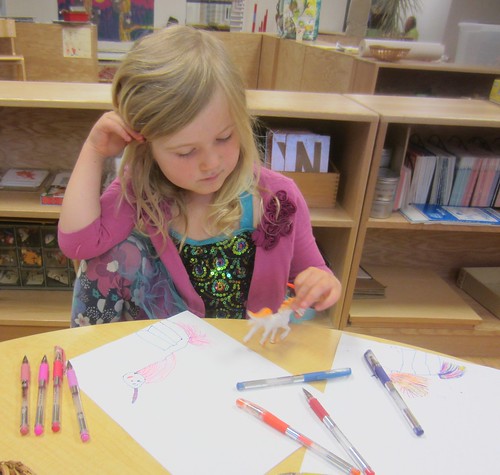 The new blocks have been very popular as we wrap up the year. The children have begun experimenting with and expanding their construction, creating villages of houses, complex roadways, and ramps for rolling cylinders down. They have been collaborating and cooperating to build their structures, then using them to play dramatic and cooperative games and scenarios, proposing and coming to agreements about how to arrange things, what purposes they serve, how to adjust their structures to better meet their goals, and making up various play scenarios. They have listened and compromised and negotiated. It is so fulfilling to see them implementing the social, emotional, cognitive, physical, exploratory, and creative skills they have been learning and practicing throughout the year.
The new blocks have been very popular as we wrap up the year. The children have begun experimenting with and expanding their construction, creating villages of houses, complex roadways, and ramps for rolling cylinders down. They have been collaborating and cooperating to build their structures, then using them to play dramatic and cooperative games and scenarios, proposing and coming to agreements about how to arrange things, what purposes they serve, how to adjust their structures to better meet their goals, and making up various play scenarios. They have listened and compromised and negotiated. It is so fulfilling to see them implementing the social, emotional, cognitive, physical, exploratory, and creative skills they have been learning and practicing throughout the year.
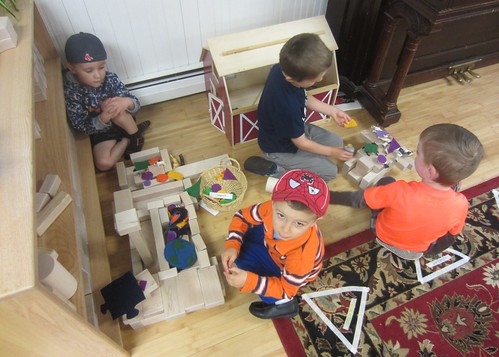
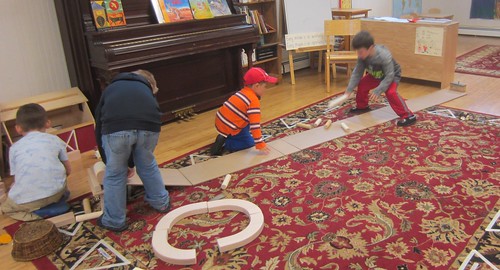

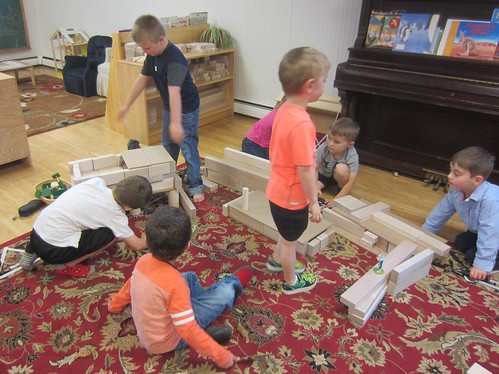
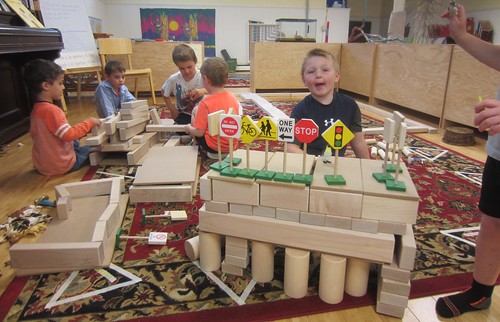
 At the children’s request, we started a short study of Antarctica, the seventh and final continent. We asked some questions, proposed some hypotheses, and completed some experiments. We began by discussing the climate and landscape in Antarctica. We learned that the continent around the south pole is covered in ice and snow and does not house any countries. Susan introduced us to glaciers and what happens when pieces break off into the ocean, which is called calving. We asked some questions: What happens to water when it gets very cold? What kind of water are glaciers made of? What kind of water is sea ice made of? How are they different and the same? What happens when glaciers calve? What happens to ice bergs and sea ice as it melts? We came to some conclusions based on what we know, and proposed some hypotheses, then we experimented. We learned that glaciers form on land from snow that has fallen and compacted over millions of years, so we know it is made of fresh water. We know that oceans are salty, so sea ice is frozen salt water. We hypothesized that water would get bigger when it froze. We hypothesized that the ice would melt in the ocean water. We hypothesized that the ice would sink and that it would float. So we decided to do some experiments to test our hypotheses. We started by making some sea water to freeze. The children took turns pouring water into flat pans, adding salt, and dripping in blue food coloring. We also took turns helping to make ice bergs by pouring fresh water into paper cups and dropping in green food coloring. We then put them in the freezer overnight.
At the children’s request, we started a short study of Antarctica, the seventh and final continent. We asked some questions, proposed some hypotheses, and completed some experiments. We began by discussing the climate and landscape in Antarctica. We learned that the continent around the south pole is covered in ice and snow and does not house any countries. Susan introduced us to glaciers and what happens when pieces break off into the ocean, which is called calving. We asked some questions: What happens to water when it gets very cold? What kind of water are glaciers made of? What kind of water is sea ice made of? How are they different and the same? What happens when glaciers calve? What happens to ice bergs and sea ice as it melts? We came to some conclusions based on what we know, and proposed some hypotheses, then we experimented. We learned that glaciers form on land from snow that has fallen and compacted over millions of years, so we know it is made of fresh water. We know that oceans are salty, so sea ice is frozen salt water. We hypothesized that water would get bigger when it froze. We hypothesized that the ice would melt in the ocean water. We hypothesized that the ice would sink and that it would float. So we decided to do some experiments to test our hypotheses. We started by making some sea water to freeze. The children took turns pouring water into flat pans, adding salt, and dripping in blue food coloring. We also took turns helping to make ice bergs by pouring fresh water into paper cups and dropping in green food coloring. We then put them in the freezer overnight.
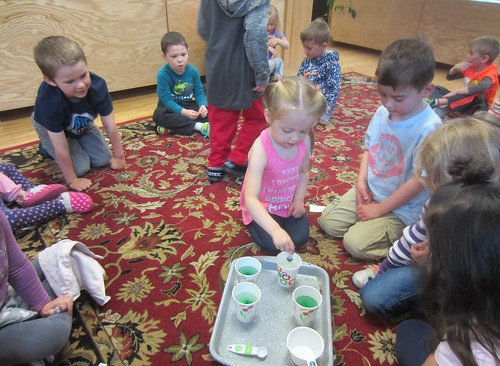 The following day the early students mixed up some ocean water by measuring out cups of water and stirring in teaspoonfuls of salt. During morning-meeting we took out the frozen sea ice and ice bergs and observed what happened when they were placed in our ocean water. We marked the water line when the sea ice was added, then observed what happened when we added the ice bergs. The children observed that the sea ice melted much faster than the ice bergs. They observed that the sea ice floated with the top of the ice aligning with the top of the water, while the ice bergs floated with a small portion above the water line, and a larger portion below the water line. We observed that when we added the ice bergs, the water line rose. At the end of the morning the ice bergs and sea ice were all melted. So we discovered that all of our hypotheses were accurate – the ice did melt in the water, it both sank and floated, and the water did expand when it froze. During circle-time we watched a video clip of a glacier calving. It was hard to get the proper perspective of their truly enormous size, but it was neat to watch the giant chunks of ice break off and plunge into the water then shoot back up.
The following day the early students mixed up some ocean water by measuring out cups of water and stirring in teaspoonfuls of salt. During morning-meeting we took out the frozen sea ice and ice bergs and observed what happened when they were placed in our ocean water. We marked the water line when the sea ice was added, then observed what happened when we added the ice bergs. The children observed that the sea ice melted much faster than the ice bergs. They observed that the sea ice floated with the top of the ice aligning with the top of the water, while the ice bergs floated with a small portion above the water line, and a larger portion below the water line. We observed that when we added the ice bergs, the water line rose. At the end of the morning the ice bergs and sea ice were all melted. So we discovered that all of our hypotheses were accurate – the ice did melt in the water, it both sank and floated, and the water did expand when it froze. During circle-time we watched a video clip of a glacier calving. It was hard to get the proper perspective of their truly enormous size, but it was neat to watch the giant chunks of ice break off and plunge into the water then shoot back up.


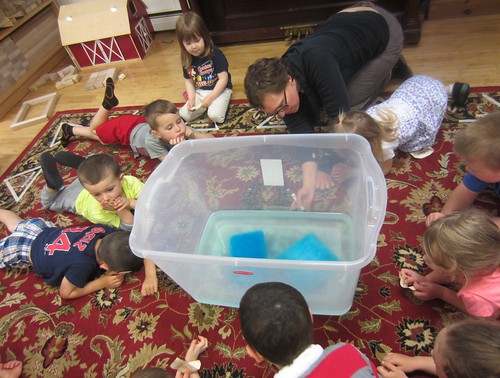


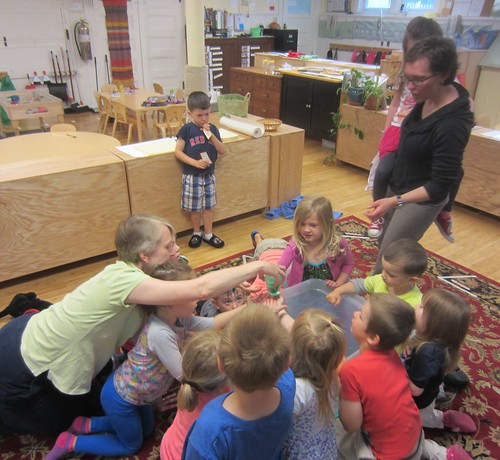

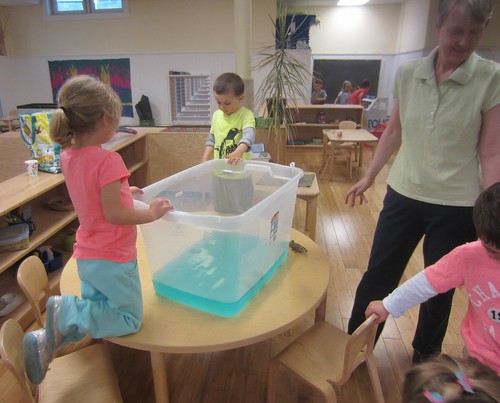 We also read all about emperor penguins, and learned all kinds of things about them. Did you know that they are the largest penguins, about the size of a five-year old child, at 4 feet tall? Did you know that the father penguins carry the eggs on their feet for two whole months, without eating, while the mother penguin goes to sea to feed, finally returning weeks after the chick hatches. We watched a video clip of mother penguins locating their mates and chicks by calling to them, which you can watch here. We also watched a clip of penguins swimming and jumping out the water, and how they do that, which you can watch here. We then did an experiment to understand how penguins stay warm in the harsh Antarctic temperatures. We put on a “blubber” mitten and dunked our blubber mitten and our bare hands in ice water to see which got cold faster (which would have been much more effective if our mitten didn’t leak, but it was still semi effective).
We also read all about emperor penguins, and learned all kinds of things about them. Did you know that they are the largest penguins, about the size of a five-year old child, at 4 feet tall? Did you know that the father penguins carry the eggs on their feet for two whole months, without eating, while the mother penguin goes to sea to feed, finally returning weeks after the chick hatches. We watched a video clip of mother penguins locating their mates and chicks by calling to them, which you can watch here. We also watched a clip of penguins swimming and jumping out the water, and how they do that, which you can watch here. We then did an experiment to understand how penguins stay warm in the harsh Antarctic temperatures. We put on a “blubber” mitten and dunked our blubber mitten and our bare hands in ice water to see which got cold faster (which would have been much more effective if our mitten didn’t leak, but it was still semi effective).
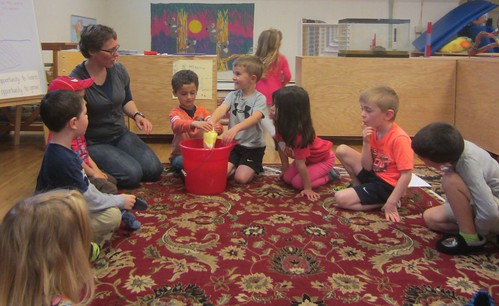
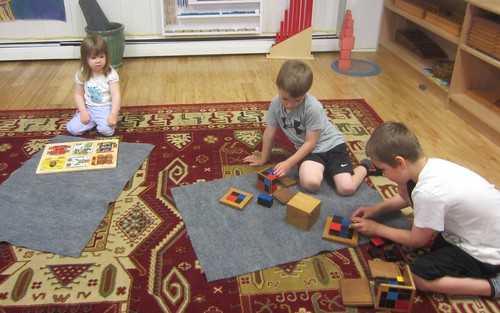
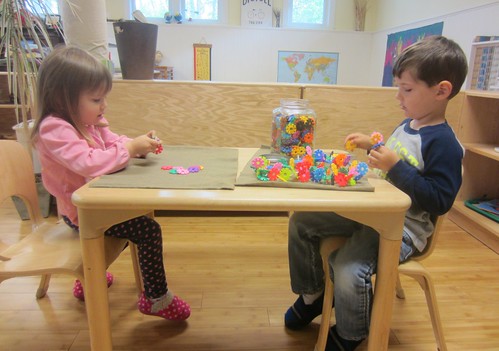

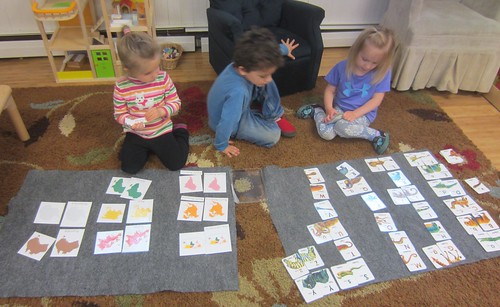

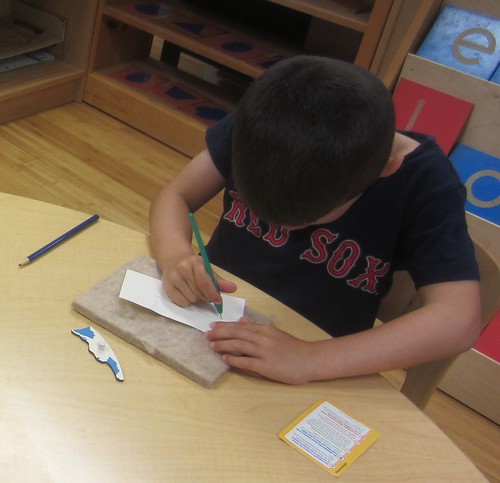
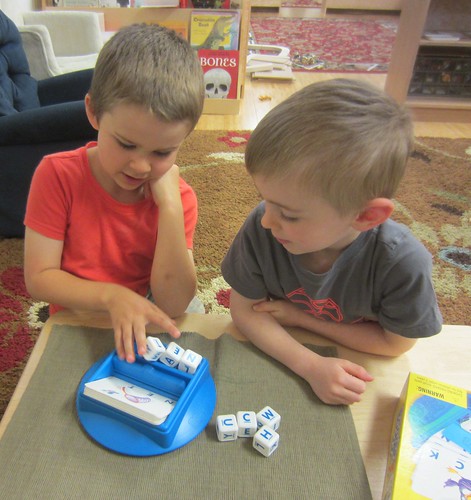

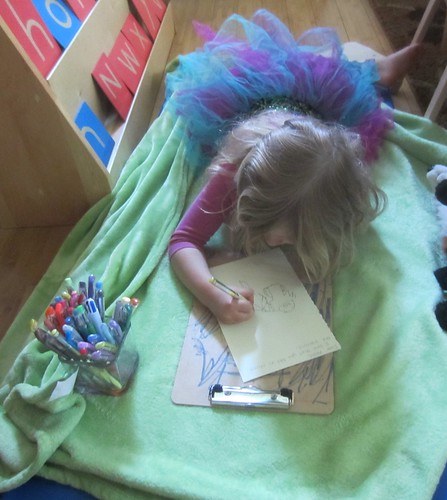
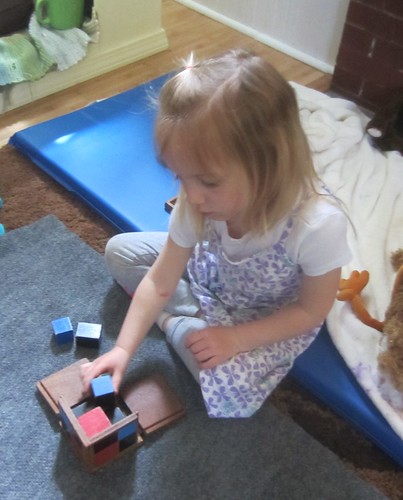

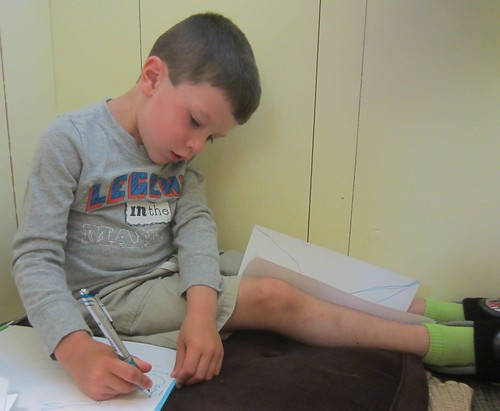
 Friday students continued to work on their continent presentations for the final day performance, and worked together to build a very cool roadway.
Friday students continued to work on their continent presentations for the final day performance, and worked together to build a very cool roadway.


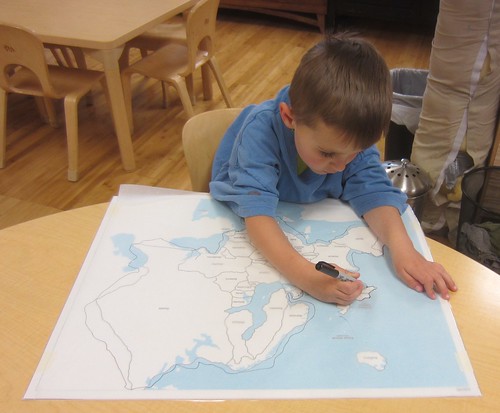
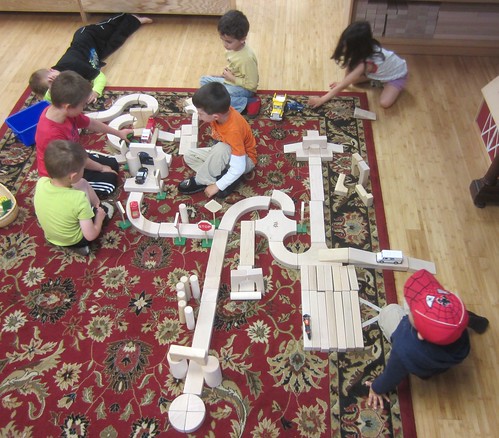
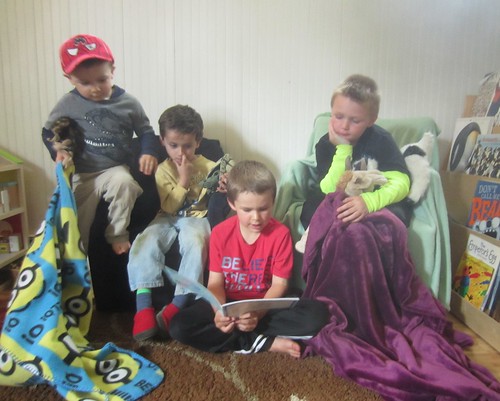
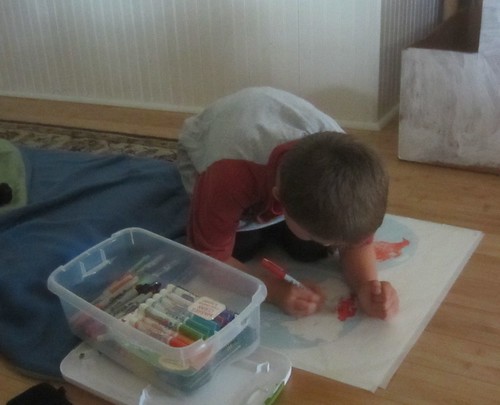

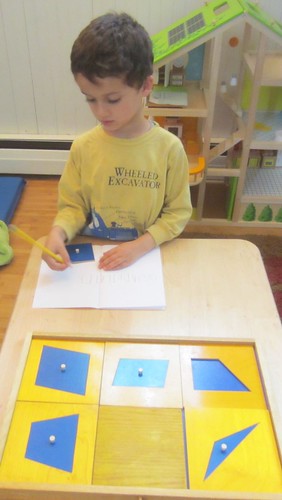
Antarctic Antics
June 2, 2017
